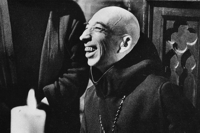tytuł oryginalny: Tribulations of Baltazar Kober
reżyseria: Wojciech Jerzy Has
występują: Rafał Wieczyński, Michel Londsale, Emannuelle Riva
kraj i rok produkcji: Polska/Francja 1988
czas trwania: 115'
data premiery: 1988-12-26
original language: Polish with English subtitles

16-letni Baltazar z Budziszyna staje się „wybrańcem” dzięki wierze w czystość moralną, którą pragnie zachować. Odbywa podróż do Drezna, gdzie uczy się w seminarium teologicznym, później do Wenecji, spotyka intrygującego podróżnika Pappagello i za jego pośrednictwem poznaje piękną lutnistkę, Rosę. Przyciągany na przemian przez Archanioła i Szatana, uczy się miłości, obrony prawdy i darowania krzywdy. A cel podróży cały czas jest złudny.
Myślą przewodnią filmu są słowa św. Anzelma z Cantenbury: „Lepiej posuwać się do przodu, nawet czasem błądząc, niż pozostawać w bezruchu”. „Historia Baltazara - powiedział reżyser - to tajemnica labiryntu. Labiryntu kabalistycznego. Bohater wędruje przez Niebo i Piekło, aby w końcu spotkać się ze Śmiercią i Miłością. Mój film jest bajką o wróżkach, jest jak sen przepełniony akcją: spiski, ucieczki i walki. Zostawiam każdemu widzowi określenie, co jest w tym marzeniem, a co rzeczywistością”.
A poetical, costume, initiatory film. Its protagonist, Baltazar (16), the last son of doctor Sigismund, is chosen as a pure-hearted boy by archangel Gabriel. His task is to go to Jerusalem. Thanks to the journey, he’s supposed to find God. During the journey theologians and actors take care of him. He’s taught by a printer, an alchemist, a barterer and a monk. Despite the fact that he stutters, he can contact dead people staying in the alive world. Baltazar is pure and trusting, he looks like a naked idiot being protected only by angels during his rowdy journey from Budziszyn, through Dresden, to Venice. He has to decide what is an illusion and what leads to spiritual illumination. The last film by Has. Despite the fact that the plot is boring, the sophisticated artistic side of the film is really interesting. It is inspired by paintings of the late Renaissance and the early Baroque painted by Sandro Boticelli, Rafael Santi, Rembrandt, Michelangelo Caravaggio or Hieronim Bosch. In addition to that, we could see some surrealism which is typical of Has. References to oneiric trips from 'The Saragossa Manuscript' and 'The Hourglass Sanatorium' could be spotted in the film. 'Tribulations of Baltazar Kober' is a triptych combining also 'Write and Fight' (1984) and 'Memories of A Sinner' (1985). It’s a Polish-French co-production based on 'Les tribulations héroïques de Balthasar Kober' (1980) by Frederick Tristan. A contemporary French writer and Romantic iconography researcher. Has cooperated with Grzegorz Kedzierski, the director of photography, and Wojciech Jaworski, the production designer. Rafal Wieczynski played the role of Baltazar, a young actor then. A graduate of the Lodz Film School in direction. In 2009 he directed 'Popieluszko: Freedom Is Within Us'.